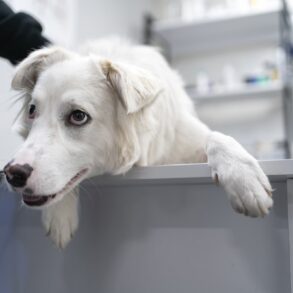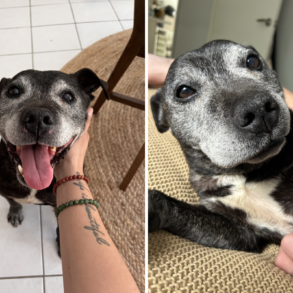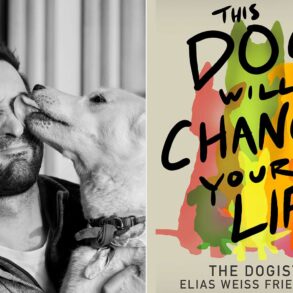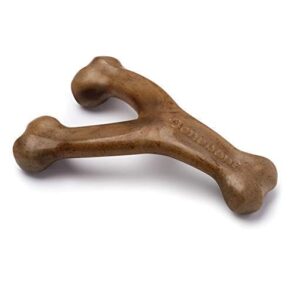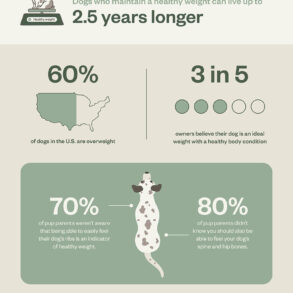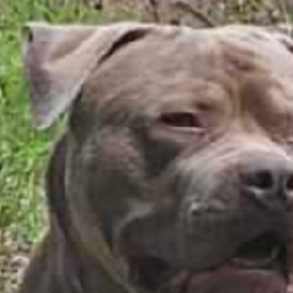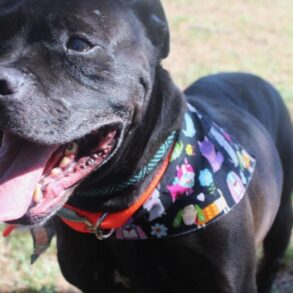Kristy Rosenberger swears by cannabidiol – more commonly known as CBD – not for herself, but for her dogs.
Rosenberger was first introduced to CBD more than a decade ago when searching for something to help her dog, Punkie, who was anxious and epileptic. When thunderstorms rolled through, the Yorkie would whimper and shake. Rosenberger was afraid her behavior might trigger a seizure.
Punkie’s neurologist recommended giving her CBD in combination with the dog’s seizure medication to sooth her symptoms. Rosenberger thought it couldn’t hurt to try, but was genuinely surprised when she noticed behavioral changes.
“When I started giving her the CBD oil, she was not reactive to those things,” the Thornton resident said. “I was like, ‘This is awesome.’”
Though Punkie has since passed, Rosenberger still uses CBD to treat another dog. Her 4-year-old rescue, Cherish, was previously abused and is terrified of loud noises. If there are storms or holiday fireworks in the forecast, Rosenberger will put drops of CBD oil in her food up to a week in advance, which makes the blue heeler calmer, less reactive and less playful, her owner said.
The market of CBD pet products has exploded in recent years as cannabis has become both legalized and normalized across the United States. A 2021 report from Brightfield Group estimated the market to reach $629 million in sales, driven primarily by people seeking out alternative treatments for their dogs’ anxiety. While the perceived benefits are often shared anecdotally among pet owners, local researchers who have studied the effects of CBD with man’s best friend say there are merits to their claims – with some caveats about the specific product and how it’s administered.
Dr. Steph McGrath, a veterinary neurologist and an associate professor at Colorado State University, has been studying the effects of CBD in dogs since 2015, when the cannabinoid was popularized for treating children with epilepsy. At the time, she wondered if it might offer similar therapeutic potential to dogs.
McGrath has conducted clinical trials to evaluate the efficacy of CBD to treat epilepsy, cancer and dementia in dogs, some of which are ongoing. She’s also looked at its ability to help with chronic pain and anxiety. While some dogs see benefits from CBD, others don’t seem to be affected by it, she said.
“Some dogs seem to respond well – it’s very calming, and it can help with pain and quality of life overall. And some dogs, to be totally honest, I don’t see really any benefits, even at higher dosages,” McGrath said. “I can’t quite figure out why.”
That mirrors Rosenberger’s experience: Her 9-month-old shepherd-collie mix, Daisy Joy, doesn’t seem to respond to CBD oil. Instead, Rosenberger feeds her chewable melatonin treats when she’s anxious.
Still, McGrath said CBD is safe for dogs, so owners looking for a remedy for their pets’ condition should feel comfortable giving it a shot. One exception is dogs with liver issues, as there are some safety concerns about CBD’s impact on that organ specifically.
Dr. Rob Landry also studied CBD use for dogs during tenures at the University of Colorado and Colorado State University, and is decidedly confident about its use to treat chronic pain. CBD reduces pain from inflammation and degenerative diseases, he said, improving an animal’s quality of life.
Landry’s view is informed, in part, by a study he conducted at his clinic, the Colorado Center for Animal Pain Management and Veterinary Care Center in Broomfield. From 2017 to 2019, Landry treated 48 dogs with hip and elbow dysplasia or pain from cancer, and added CBD to their medication regimen. Owners completed surveys about their pets’ behaviors, noting changes over time.
Landry said every owner reported some improvement, whether it be that the dog was able to get up and move around more easily, their demeanor changed positively, or the animal desired to play more. “The beauty of the veterinary side of things is no placebo effect,” he said.
His conclusion: “I feel no aging senior pet or any pet that has any degenerative joint disease should ever, ever go without the benefit of CBD.”
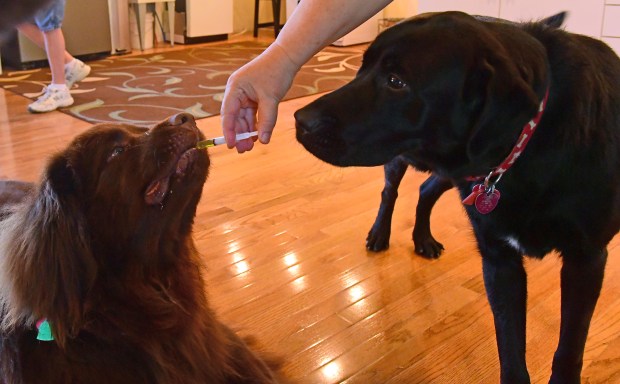
Choosing the right product
Finding the right product for your pet can be challenging amid the myriad tinctures and treats available because CBD remains largely unregulated.
Both McGrath and Landry suggested buying a full-spectrum product that is derived from hemp rather than marijuana. Full-spectrum formulas include CBD alongside other terpenes and cannabinoids. Scientists believe cannabinoids work in concert with one another to amplify the benefits, a concept called the entourage effect, versus when they are isolated from one another.
Just make sure whatever you buy is low in tetrahydrocannabinol (THC), which can be toxic to dogs, Landry added.
Both vets recommended obtaining a certificate of analysis (COA) from the manufacturer to confirm the product has been tested and contains what the label says it does. The COA should match the batch number of the bottle. If a company is unwilling to provide documentation, that should be a dealbreaker.
How you give CBD to your dog also matters. In his study, Landry found giving dogs CBD oil tinctures sublingually was the best way to hit the target milligram dose. If your dog won’t cooperate, you can put the tincture on his or her food, but Landry suggests adding more than the recommended dose because food blocks some of the absorption.
While some dogs show the effects quickly, it may take time for others to do so. Landry said to give it at least two weeks before increasing the dosage, while McGrath said to stick with it at least a month. And be sure to consult your vet along the way.
“It’s kind of still an art right now. Be patient,” she said. “I would give it a couple of months and, if it doesn’t work, call it a day.”
Recommended products
Not sure where to start? Check your local pet store or choose from the following list of companies recommended by our experts.
This post was originally published on this site be sure to check out more of their content.




